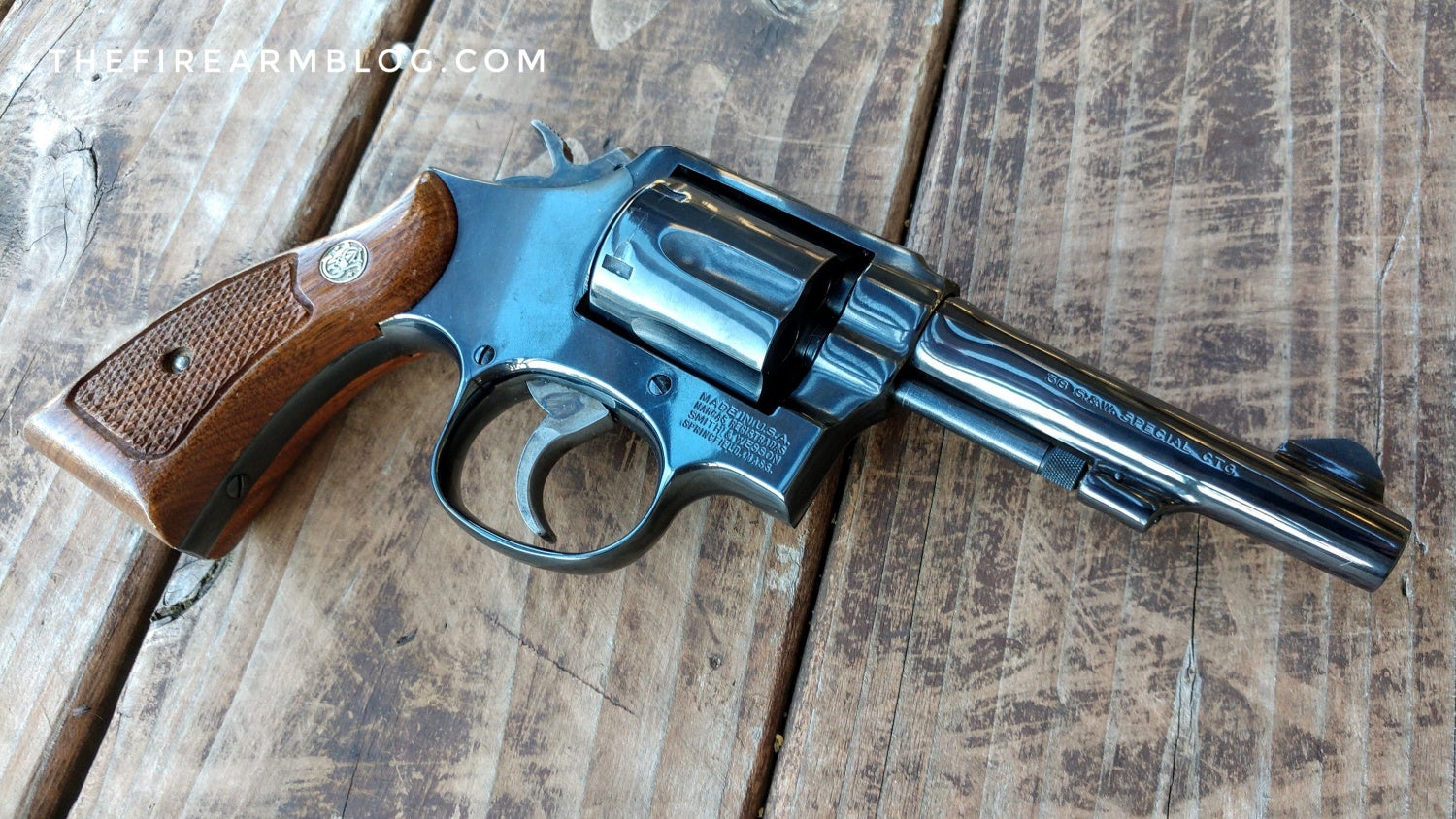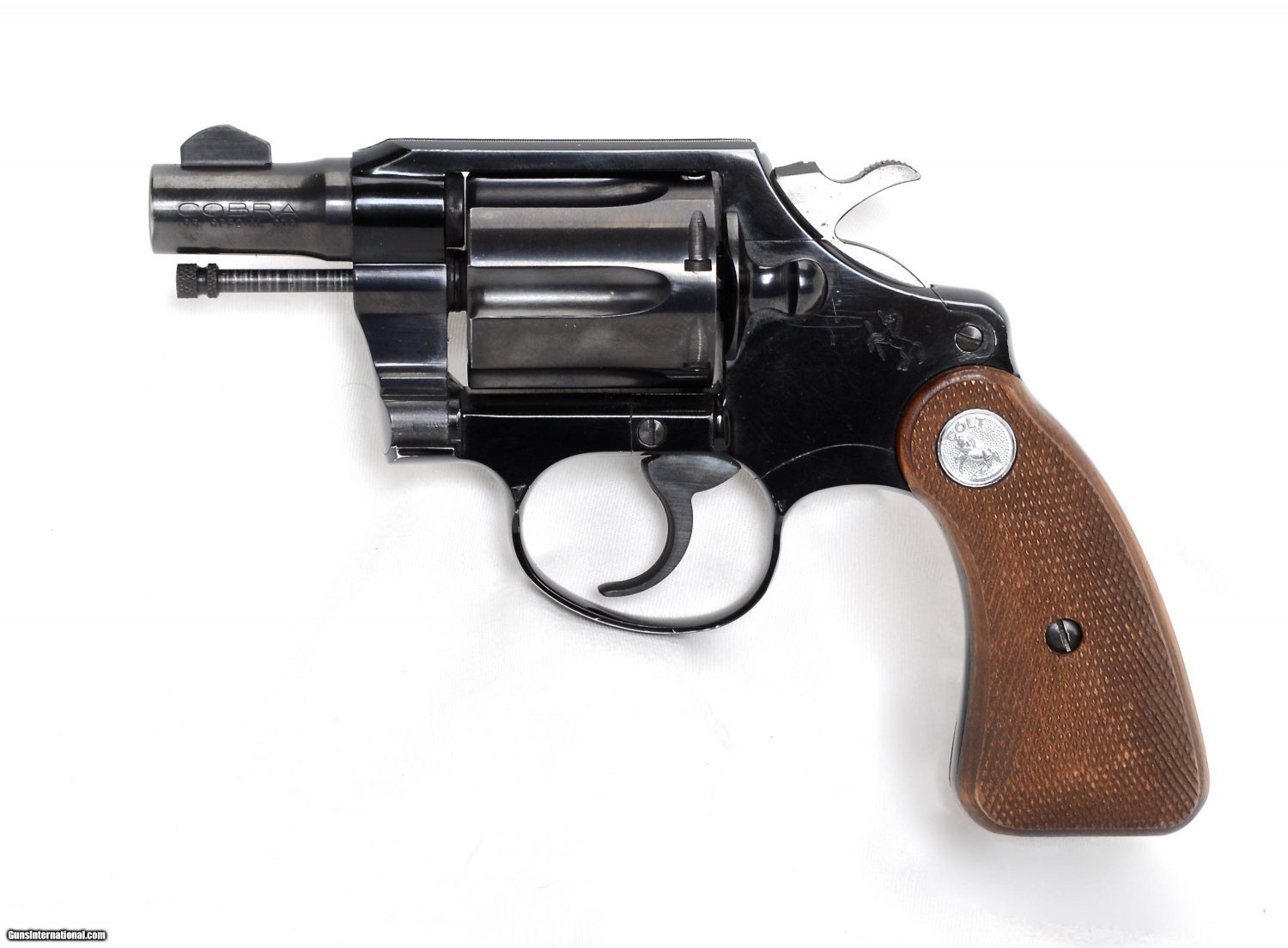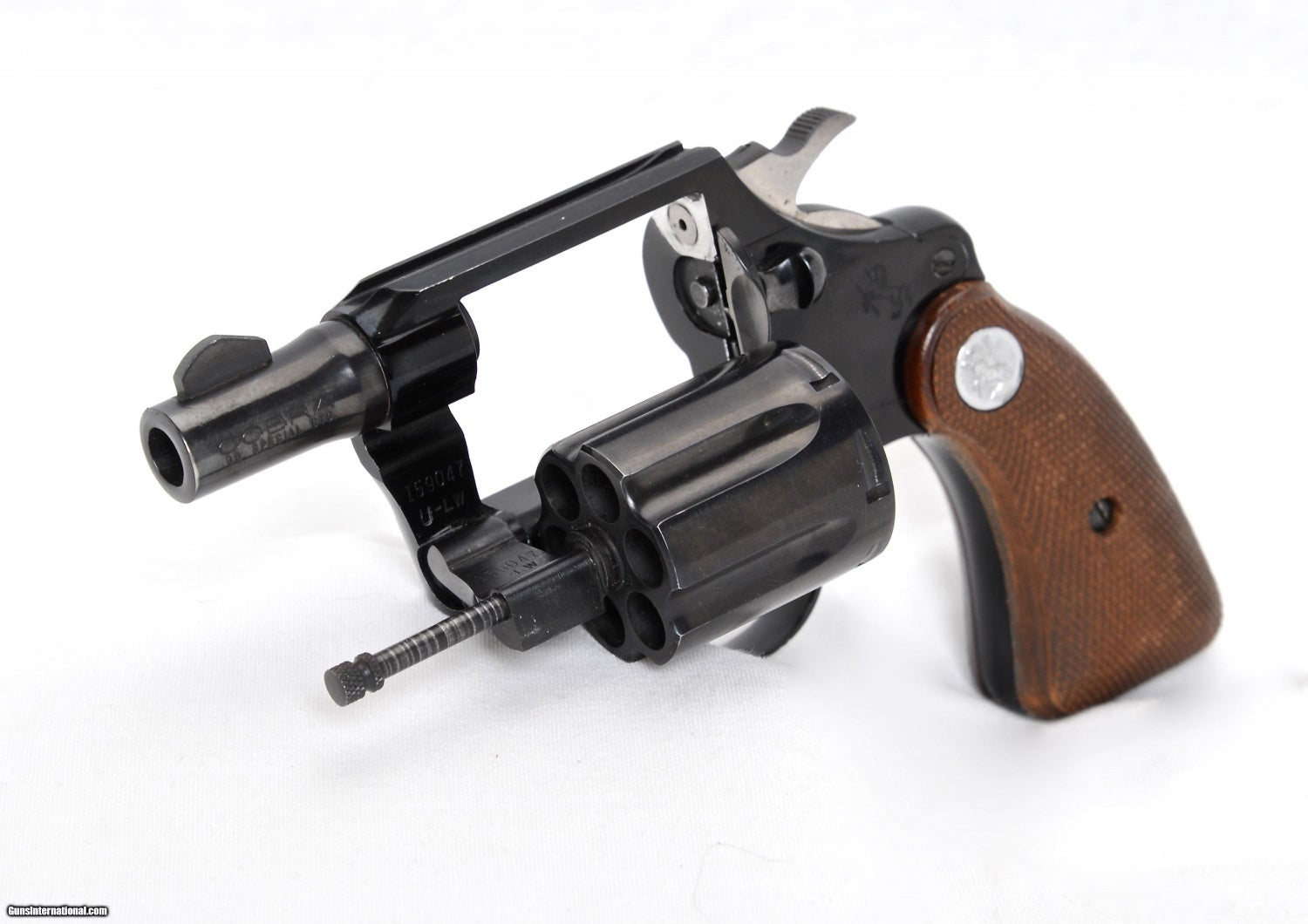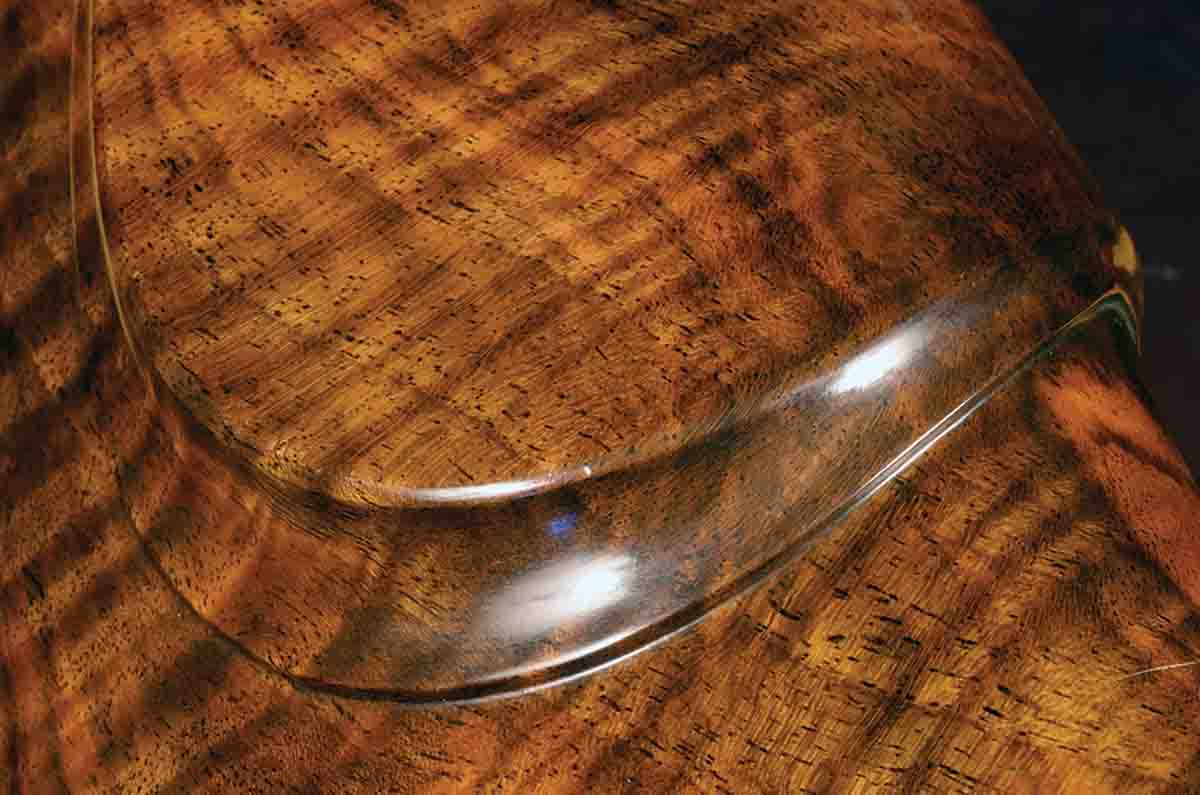
This article first appeared in the July 1978 issue of Shooting Times.
|
Gun writers are supposed to know everything, especially a whole bunch of words. I remember when I was first starting out in this racket and had to learn thousands of words like “barrel,” “cylinder,” “cartridge,” “grips,” “holster,” and even more technical stuff than that. Over the years, I’ve built up what I think is a pretty good vocabulary of gun terms. A lot of these I steal from the works of other gun writers because I avidly read their stories for any good, new gun words I can lift.
A new one has been rearing its head and then ducking back out of sight during the last year in several of the better shooting publications. It showed up in one guy’s column, then I saw it in a piece about a fancy rifle. It even slipped into a couple of well-written pro-gun articles I read. The way it was used was rather slippery, and I couldn’t get a good hold on it. But since everybody else was using it, I knew I had to get it on my working list.
The word is panache. It looked to me like it ought to be pronounced “pawnatch,” and I had a vague impression it meant something along the lines of “slumgullion” or maybe “mishmash.” In the end, I had to do something that always hurts my pride: I looked it up in my Webster’s Collegiate, which has had uncut pages in it ever since I got kicked out of college in 1948.
Here’s what panache means: (pe´näsh) n. 1: an ornamental tuft (as of feathers) esp. on a helmet 2: dash or flamboyance in style or action: VERVE.
Hell, I’d been missing out on using some of my best stories for years because I didn’t know the meaning of the firearms word panache. I’ve held back dozens of them from publication simply because I was unfamiliar with a two-syllable word that would qualify them for inclusion in the gun rags.
An example is a tale I’ve heard for years that took place in one of our Western states during the height of conflict between us and the Axis. The names used are absolutely nothing like the names of the real-life players.
One was an ex-federal officer on military leave to the Army Air Force as a bomber pilot and trainer of bomber crews. Let’s call him “Tim.” Tim had been a sharp and aggressive, if sometimes restless, law enforcement official. He carried these qualities with him into the air arm where his sometimes stultifying duties mainly consisted of flying green crews over the monotonous desert terrain so they might drop lightly charged practice bombs on, or at, targets of opportunity.
Now Tim was from an old ranching family; he had a revered uncle named Jack, a past middle-aged wiry cowpoke who ran a goodly number of cows and fair-to-sorry horses on a spread only about 50 miles or so from the bum brothers’ practice range.
In need of diversion, Tim decided to fly over Uncle Jack’s spread one spring morning to see how the old duffer’s place was greening up. Making a low pass, he was pleased to see his relative accompanied by a couple of Mexican cowboys, hazing about 50 or 60 head of coyote-wild crowbaits down the side of a mountain toward the main horse pasture. The jaded attitude of riders and beasts suggested that there had been several days of argument before the caballada had given up its wild, free mountain home and agreed to plod back to the domesticity of the home pasture.
Tim and Jack loved practical jokes–as long as they were on somebody else. Making a slow, low-altitude approach, Tim opened his bomb bays and instructed his trainer bombardier to let a couple go about 200 yards behind the horse herd.
He chuckled as he heard the puny-powered eggs slip out of the plane’s belly and then made a quick turn to starboard, the better to view the ensuing stampede.
The intercom blasted his ears as the young bombardier screamed his report, “Migawd, sir, I hit right in the middle of ’em.”
The alarmed pilot made a 180 and another lower pass to assess the damages. There was a big cloud of dust, horses running so as to box the compass, and one horse (a bald-faced mare that later was found to be permanently fistulowed) was down.
So was Uncle Jack, but Tim watched in horror as he arose and ran limping to the side of his well-trained, stock-still cowhorse and slipped a Model 94 Winchester from the scabbard.
As he passed over the melee, Tim caught a last glimpse of Uncle Jack opening fire at the big, silver bird with his .30-30.
A week passed, during which no attempt at contact was made between the errant nephew and irate uncle. Suspense mounted and finally Uncle Jack gave in, visiting the federal offices of Lefty Day, Tim’s former boss and an ex-partner of Jack’s.
Lefty kept his finger on the pulse of his assigned piece of country and frequently received bits of information that he kept secret until they could be used. He knew about the bombing incident through one of the Mexican cowboys.
But no one knew he knew.
As usual, Lefty was a jovial host, providing coffee and talk about the drought and the sorry calf crop to Jack. The small talk dribbled and died, and finally the Levied Jack inquired in what he hoped was a casual manner, “What you hear from Tim?”
Lefty’s face showed open-faced surprise, then solicitude. “Why hell, Jack, that’s what I thought you were in town for. Ain’t you heard? Tim took a bombin’ crew on an unauthorized run over somebody’s place–he won’t tell whose–and got his plane shot full of holes. They got him in the stockade for all kinds of charges and are lookin’ hard for some jasper that shot up that plane. I thought you were in town to get him a lawyer.
“Well I’ll be damned,” Jack replied. “Didn’t hear nothin’ about it. Well, I got some sick heifers and better be headin’ back to the place. Tell Tim I hope everything comes out okay.” Jack left, not to be seen for several months.
Within a couple of days, Tim, smartly uniformed and ostensibly hale and unworried, paid a visit to Lefty’s office. Coffee was served up.
Lefty complained that all his good men had gone to the service. Tim countered with good news about the Sicilian campaign. He had just been promoted to captain, although he confided in Lefty that the promotion board had had some sticky questions about some mysterious bullet holes in the tail assembly of his aircraft.
“Must have been some screwball around the gunnery range,” mused the pilot. Getting down to domestic matters, Tim politely inquired about his esteemed uncle.
Lefty managed to make his face blanch. “Lord, Tim, I thought that’s why you were here. They buried Jack yesterday down on his place. I thought you knew or I’d have called.” With an expression held in the clean, rigid lines of a death mask, Tim asked what had happened.
“All we know is that his vaqueros said an enemy aircraft bombed them while they were moving a bunch of horses. Got old Jack. Lot of people trying to make it a Doolittle-type Jap raid, but every government and military intelligence unit in the area is working. Has to have been some nut in a stolen U.S. plane. One of the cowboys got a couple of numbers off it. We’ll get ’em, don’t you worry.”
Tim placed his full coffee cup on the desk. “Lefty, this is hard to take, but I’ve got my job to do at the base. If you get a line on the SOBs that did this, let me in on it.” The two officers sadly shook hands, and Tim departed for the base.
As good an example of panache as I’ve ever heard. I don’t employ a great deal of panache in my day-to-day activities, but there have been moments.
A few years ago, I was a U.S. Customs special agent. My fellows were all good men but with differing personal preferences. Many enjoyed hanging all the various diplomas and letters of commendation they had received on the walls of their offices. Others considered this ostentatious and hung western desert scenes or other ornamental tapestries. One guy I knew always kept his latest EKG pinned up behind his desk.
My own idiosyncrasies sometimes become apparent when related to the way I decorate my surroundings. I am an inveterate W.C. Fields devotee. Transferring into one large office on the Mexican border, I promptly tacked up a 3×5-foot poster of Fields in his classic poker player pose–sitting at the edge of a chip-laden table, concealing his five-card draw hand behind dainty silk gloves and peering suspiciously from beneath the brim of a gray top hat at his opponents.
I took solace and gained strength and fortitude by standing reverently before my poster each morning, summoning the strength to do that which must be done. Some of my more literate superiors offered the opinion that more suitable adornment might be found for the walls of an office of investigations of the United States Treasury Department.
I persisted. A staunch ally was found in the person of one supervisory agent who, it developed, was also a follower of the career of the great juggler. We spent many after-hour sessions in local bistros, applauding the deeds of the inspirational entertainer and exchanging our wealth of Fields’ anecdotes.
As it always must, our profession claimed most of our time. One dark night we were called on to join in a Herculean effort to serve about 50 arrest and search warrants, the results of months of “buys” of undercover narcotic agents who had been clandestinely operating in our area.
The project was a series of nighttime raids to be made as simultaneously as possible so as to let no dopers be forewarned and escape the net. This took the combined efforts of a great many officers and turned out to be a textbook example of cooperation between local, state, and federal enforcement officers.
One of my team’s several assignments that night was to hit a third-floor apartment. We had been alerted by the undercover men that the accused pot peddlers were armed with .357 revolvers and had stated they would “smoke” any “heat” that bothered them. I was elected to go in the front door with others equally blessed–there was no back exit.
After dutifully knocking and shouting “Federal officers with a search warrant!”, waiting a reasonable time, and hearing scuffling sounds inside, I kicked the door loose with a boot heel and confronted a young gentleman clad only in a Sir Galahad hairdo. His right hand was dipped into a paper bag. I introduced his bellybutton to the Cutts Compensator on the muzzle of my Thompson.
His .357 fell to the floor, and after a flurry of activity, his codefendants were secured, giving us time to inspect and search the premises. There was a combined aroma of incense and marijuana smoke. There were large packages of the weed and illicit pills. There were the loud strains of hard rock emanating from a stolen stereo. There were beaded curtains.
The punks lived well. Their walls were decorated with large posters of the Beatles and similar celebrities.
But to my surprise and disappointment, I found a smaller version of my W.C. Fields poster in a secluded corner. I viewed it in dismay. Soft footsteps approached, and my fellow W.C. Fields buff stood beside me, a .45 automatic hanging loosely at his side. He silently gazed with me and whispered, “Is nothing sacred?”
The furnishings of the rooms were all “hot” property. We assisted city police in seizing them. All but for one.
The next day, my colleague entered his barren office only to find a small poster taped on the wall across from the desk. It was of a big-nosed man in a top hat squinting over a poker hand.
I didn’t know what you called it then, but now I’m happily aware that I got panache, too.





.gif)
















